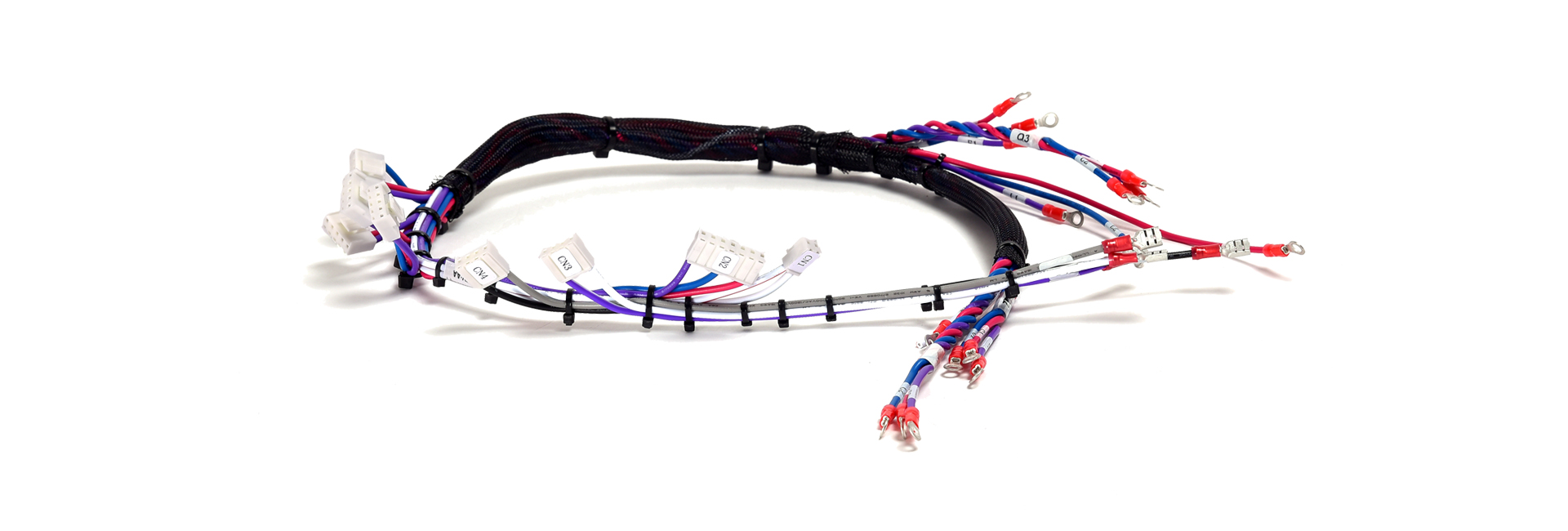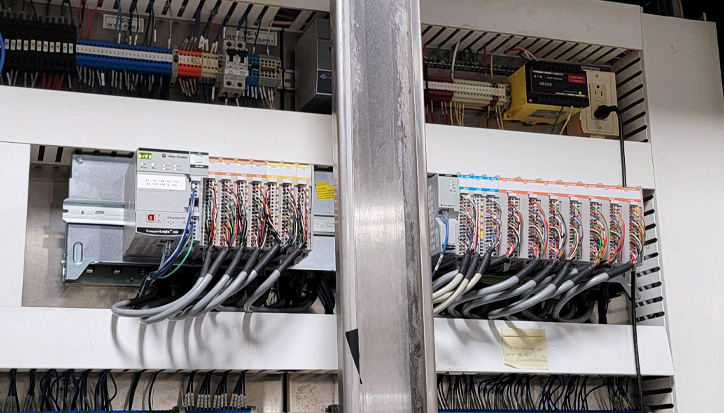
In Variable Frequency Drive (VFD) cabinets, wiring harnesses bundle, organize, and protect electrical wires, ensuring efficient power distribution, signal transmission, and system control. They enhance safety, reduce electromagnetic interference (EMI), and simplify installation and maintenance, ensuring the reliable performance of motors, pumps, and automation systems.
TSP’s custom VFD wiring harness solutions are designed to meet the demands of industries needing precise motor control, energy efficiency, and reliability, providing safe, stable, and efficient electrical connections to help businesses optimize operations and minimize downtime.
| Wire Insulator Material | Rated Temperature | Rated Voltage | Connector Using | Standard |
|---|---|---|---|---|
| FEP / PVC | 200℃ / 90℃ | 10KV-DC / 1200V-DC | TE / JST | Meet RoHS Standard |
| Wire Insulator Material | FEP / PVC |
|---|---|
| Wire Insulator Material | FEP / PVC |
| Rated Temperature | 200℃ / 90℃ |
| Rated Voltage | 10KV-DC / 1200V-DC |
| Connector Using | TE / JST |
| Standard | Meet RoHS Standard |

● Usage:Industrial robot teach pendant connection
Designed for reliable signal and power transmission between the teach pendant and the robot controller.
● Usage:ECU Integration
Enables efficient data transfer and power delivery for precise control of battery management, motor control, and charging.
● Usage:Medical Equipment System
High-reliability wiring solution with precise connections, ensuring optimal performance and safety in medical devices.

The lifespan of a connector typically depends on the usage environment and frequency of use. Generally, high-quality connectors can withstand thousands of insertion and removal cycles under normal conditions.
When selecting a connector, consider the following factors:
• Application environment: temperature, humidity, vibration, etc.
• Electrical requirements: necessary voltage, current, and impedance.
• Size and shape: ensure compatibility with existing equipment.
Installation steps typically include:
• Ensure the power is turned off.
• Align the connector, ensuring the pins on the plug and socket fit correctly.
• Apply even pressure to insert until you hear a “click,” indicating it is locked in place.
If you experience poor contact, try the following:
• Check if the connector is securely inserted.
• Clean the contact surfaces to remove dust and debris.
• Inspect the connector for damage; if damaged, replace it.
Many connectors are designed to be waterproof and weather-resistant, but for outdoor use, it’s best to select connectors specifically designed for such environments, ensuring they meet the required protection ratings.
We provide customization services for connectors, including special sizes, materials, and electrical specifications. Please contact our technical support for more information.
To extend the lifespan of connectors, we recommend regularly checking and cleaning them. Avoid storing them in high-temperature or humid environments, and refrain from excessive pulling on cables during use.
If you have any questions, feedback, or need more information, please fill out the form below. Our customer service team will get back to you as soon as possible. Thank you for your support!